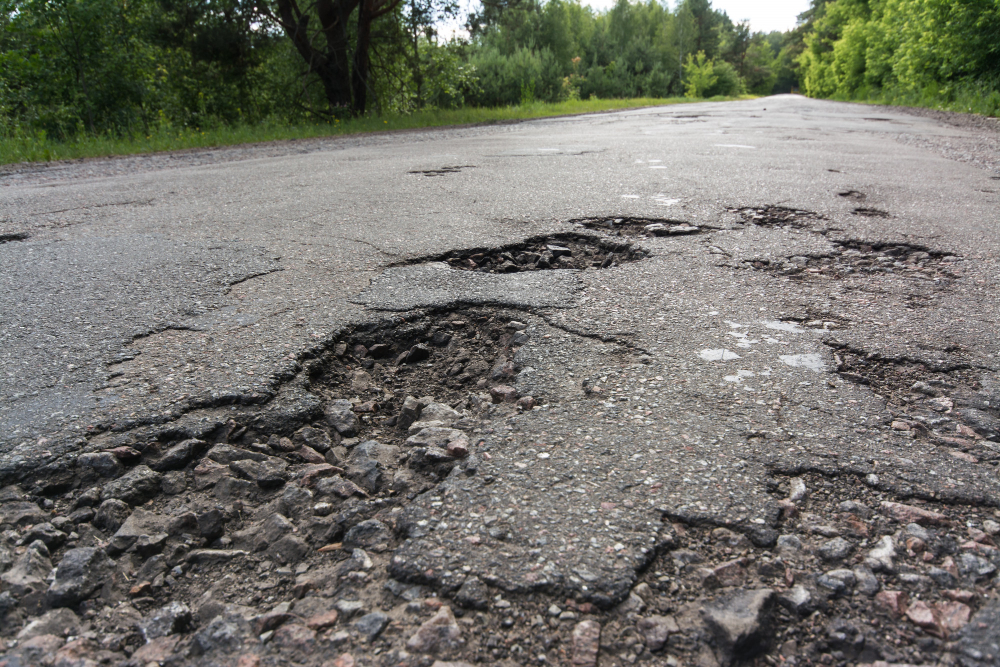
The smooth, durable blacktop beneath our vehicles is often taken for granted. However, what looks like a virtually indestructible surface can quickly show signs of wear and damage. In an age where environmental concerns are at the forefront, understanding the causes of asphalt damage and the best ways to address it is not only practical but also an important step towards a more sustainable approach to road and facility maintenance.
When it comes to asphalt, its longevity and performance are closely linked to the quality of installation, climate factors, and usage patterns. For property owners and managers, learning about the potential threats to their blacktop can lead to better usage practices and more informed decisions when it's time for repairs. So let's delve into the common culprits behind asphalt damage and explore the solutions that pave the way for a smoother, more sustainable future.
Asphalt, while robust, is still a material that is subject to decay over time. The list of potential culprits behind asphalt deterioration is not short, with weather, water, and wear being the primary adversaries. Here's a detailed look at these foes of your pavement.
Water seepage into the sub-structure of your asphalt can cause a variety of problems, including the formation of potholes, cracks, and even full-on pavement failures.
Freeze-thaw cycles are particularly damaging, with water expanding as it freezes and contracting as it thaws. These cycles exert tremendous pressure on the surrounding asphalt, leading to degradation over time.
Ultraviolet (UV) rays from the sun can degrade the binders within the asphalt, leading to color fading, brittleness, and general weakening of the surface. This process, known as oxidation, is a significant contributor to the aging of asphalt pavements.
Age itself is a form of damage, as no material lasts forever. Over time, asphalt can sag and develop sinking spots, which we commonly call 'alligator cracks' due to their resemblance to reptile skin. These are advanced forms of asphalt disintegration that require immediate attention.
Asphalt is built to withstand a substantial amount of weight, but only up to a point. Beyond these limits, properties will experience a gradual decline. Over time, the repeated stress from heavy vehicles can cause the asphalt to deform, leading to ruts and undulations in the surface.
Improper installation and maintenance practices can also severely impact the longevity of your asphalt. Insufficient compaction during the installation process, for example, can lead to the premature failure of the pavement.
Understanding the causes of asphalt damage is only the first step; the next is finding effective and sustainable solutions. Let's explore the most common and best practices for repairing asphalt damage and how they can contribute to a more sustainable approach to pavement maintenance.
Sealcoating is like sunscreen for your pavement. It can protect your asphalt from the sun's harmful UV rays and prevent water from penetrating the surface, significantly extending the life of your pavement.
When applied correctly, sealcoating acts as a barrier that reduces water infiltration into the asphalt, maintaining its flexible properties and preventing oxidation. With a relatively low environmental impact, regular sealcoating is a sustainable solution that can prevent the need for more extensive—and more resource-intensive—repairs down the line.
Crack filling is one of the most cost-effective ways to prevent water from infiltrating the pavement and causing further damage. By sealing these fissures, crack filling prevents water from reaching the sub-structure, where it can lead to the weakening of the base and the eventual formation of potholes.
Routine inspection and maintenance can catch these issues early, allowing for quick and easy repairs that can extend the life of the pavement significantly. Employing a proactive approach saves resources and can prevent the safety hazards and increased maintenance costs associated with larger problems.
When potholes form, swift action is needed. Potholes can be a safety hazard, cause damage to vehicles, and indicate more significant issues beneath the surface. Pothole patching can provide a quick fix for these symptoms, but it's also crucial to investigate and address the root cause to prevent future potholes from developing in the same area.
When asphalt damage is too extensive for preventative measures or simple repairs, the best option may be to resurface or replace the affected area. While more resource-intensive, these solutions can extend the life of the pavement and prevent a domino effect of issues spreading to other sections of the surface.
These higher-level interventions can often be made more sustainable by using recycled materials in the new asphalt mix. By reusing asphalt, we can reduce the demand for new resources and lessen the environmental impact of the replacement or resurfacing project.
Understanding the causes of asphalt damage and the most effective repair methods is essential, but taking a sustainable approach to maintenance can further enhance the longevity and performance of the pavement. Here are some final tips for embracing sustainability in asphalt maintenance.
Use environmentally friendly products and practices whenever possible. This can include the use of recycled materials in repair projects, as well as the selection of sealcoating products that have a lower environmental impact without sacrificing performance.
Implement maintenance plans that include routine inspections and repairs. Catching and addressing issues early can not only save money in the long run but also reduce the resources needed for more extensive repairs.
Employ proper drainage solutions to prevent water from collecting on or near the asphalt. Good drainage can prevent many of the common issues associated with water damage, such as potholes and cracks.
By taking a proactive approach to asphalt maintenance and embracing sustainable solutions, property owners and managers can preserve the integrity of their pavements while also contributing to a cleaner, greener environment. When it's time for asphalt repairs in Sanford, FL, choosing a company like Florida Sealcoating can make all the difference in the long-term health of your blacktop and the planet. Contact Florida Sealcoating today for free estimates and to discuss how sustainable asphalt solutions can benefit your property.